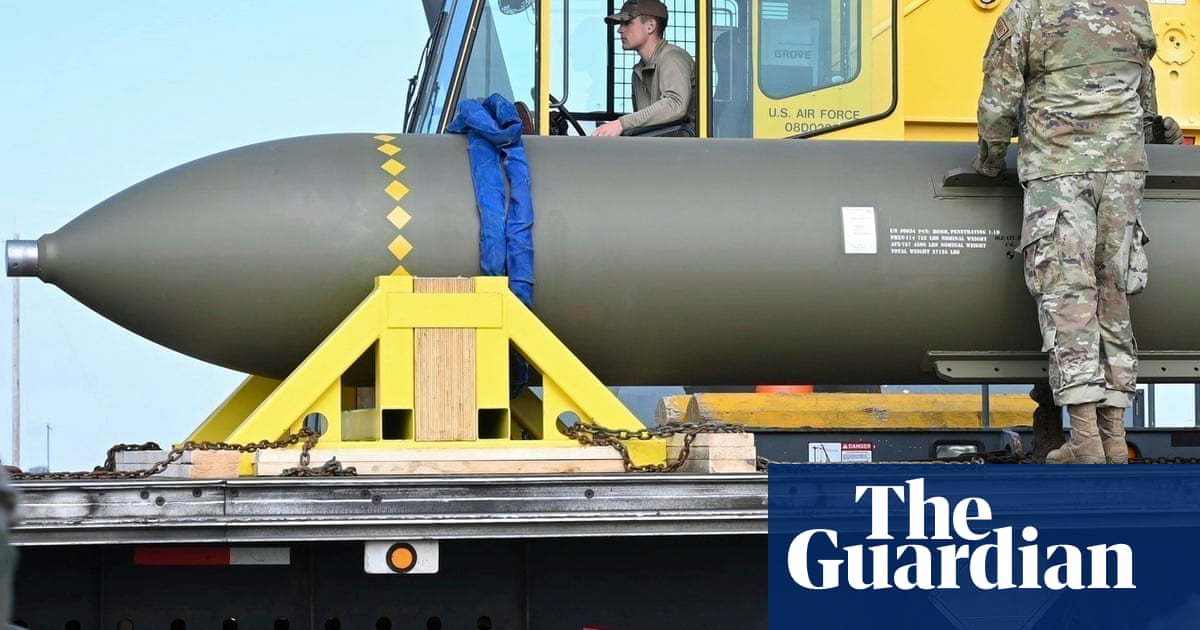In recent discussions regarding national security, former President Donald Trump has raised caution about potential military strikes against Iran, particularly centered around the strategic Fordow facility. The significance of the Fordow site lies in its crucial role in uranium enrichment, a process essential for developing nuclear weapons. As tensions with Iran escalate, it’s imperative to analyze the implications of military action, especially with respect to the efficacy of weaponry like the “bunker buster” bomb.
Reports indicate that Trump has suggested to defense officials that any military action against Iran should be contingent on the assurance that the impact of GBU-57 bombs—known as bunker busters—could effectively incapacitate the Fordow facility. These bombs are hefty, weighing in at approximately 13.6 tons (30,000 lbs), yet doubts remain about their capability to penetrate deeply enough underground to achieve a complete destruction of the Fordow site.
The Pentagon has been grappling with these questions since the early days of Trump’s presidency. Discussions among defense officials have brought to light the perspective that only a tactical nuclear weapon might be able to reach and neutralize an installation as fortified as Fordow, buried nearly 300 feet underground. Despite this troubling assessment, it’s noteworthy that Trump has opted not to consider the use of tactical nuclear weapons, according to officials involved in high-stakes meetings with the defense leadership.
The risks associated with bombing Fordow highlight the complexities of any potential strike. Current strategies involving conventional munitions, even a concerted effort using multiple GBU-57s, might only result in suffocating the facility under debris, rather than eliminating it entirely. The consensus among defense analysts asserts that achieving success in this endeavor would necessitate a combination of preparatory strikes to destabilize the ground, followed by the employment of a tactical nuclear weapon dropped from a B2 bomber—capable of penetrating defenses and hitting the site accurately.
While the GBU-57 is designed specifically for destroying bunkers, its effectiveness in the Fordow scenario remains questionable. The characteristics of the Fordow facility—as an underground complex strategically constructed to withstand aerial attacks—pose unique challenges. Former Deputy Director of the Defense Threat Reduction Agency, retired Major General Randy Manner, articulated skepticism regarding the bomb’s potential impact. He suggested that a strike on Fordow would likely delay Iran’s uranium enrichment capabilities for no more than six months to a year, a far cry from dismantling the program altogether.
The significance of Fordow in global nuclear politics cannot be overstated, particularly after revelations that the facility has enriched uranium to a staggering 83.7%, alarmingly close to the 90% threshold required to develop nuclear weapons. Hence, efforts to either diplomatically or militarily neutralize Fordow are viewed as crucial to curtailing Iran’s nuclear ambitions. Interestingly, the task of striking this facility falls squarely within U.S. capabilities, as Israel lacks the necessary ordinances and aircraft proficient enough to execute such a complex operation.
Moreover, the Fordow soiree unfolds against a backdrop of complex geopolitical chess moves, with Israel having devised multiple plans for incapacitating the site over recent years. Some of these include unconventional tactics, like deploying commandos via helicopter to breach the facility—a strategy Trump has reportedly disregarded.
The discussions surrounding military action against Iran and the effectiveness of bunker buster bombs reflect a tense moment in international relations. The implications of any military strike, especially one aimed at a facility like Fordow, could be profound, possibly igniting further conflict in an already tumultuous region. While Trump’s administration explored these military options, the calls for diplomatic engagement with Iran continue. The hope persists that the threat of U.S. involvement might spur negotiations, potentially leading to a resolution that minimizes the likelihood of military confrontation.
In conclusion, the uncertainty surrounding the effectiveness of a military strike on Iran, particularly regarding the Fordow facility, necessitates a cautious approach. The dialogue emphasizes the need for deliberation and the complexities involved in addressing Iran’s nuclear program. With multiple layers of risk and consequence surrounding any potential actions, stakeholders from both diplomatic and defense sectors are urged to weigh strategies carefully, focusing on both short-term impacts and long-range outcomes as they navigate this highly sensitive geopolitical landscape.
Source link










